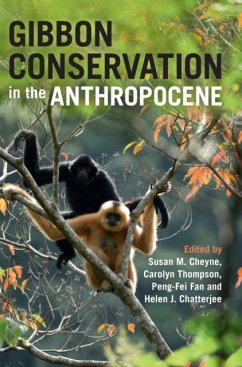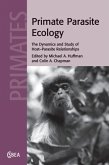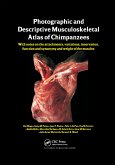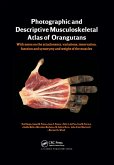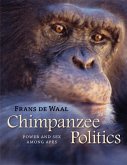Gibbon Conservation in the Anthropocene
Herausgeber: Cheyne, Susan M; Fan, Peng-Fei; Thompson, Carolyn
Gibbon Conservation in the Anthropocene
Herausgeber: Cheyne, Susan M; Fan, Peng-Fei; Thompson, Carolyn
- Gebundenes Buch
- Merkliste
- Auf die Merkliste
- Bewerten Bewerten
- Teilen
- Produkt teilen
- Produkterinnerung
- Produkterinnerung
Gibbons are the most speciose of the apes. Despite being highly threatened, they receive less research and conservation attention compared to the great apes. This book presents cutting-edge research and conservation actions for hylobatids aimed at researchers, students and conservation practitioners within primatology and conservation ecology.
Andere Kunden interessierten sich auch für
![The Real Planet of the Apes The Real Planet of the Apes]() David R. BegunThe Real Planet of the Apes29,99 €
David R. BegunThe Real Planet of the Apes29,99 €![Fossil Primates Fossil Primates]() Susan Cachel (New Jersey Rutgers University)Fossil Primates70,99 €
Susan Cachel (New Jersey Rutgers University)Fossil Primates70,99 €![Primate Parasite Ecology Primate Parasite Ecology]() Primate Parasite Ecology64,99 €
Primate Parasite Ecology64,99 €![Photographic and Descriptive Musculoskeletal Atlas of Chimpanzees Photographic and Descriptive Musculoskeletal Atlas of Chimpanzees]() Rui DiogoPhotographic and Descriptive Musculoskeletal Atlas of Chimpanzees92,99 €
Rui DiogoPhotographic and Descriptive Musculoskeletal Atlas of Chimpanzees92,99 €![Photographic and Descriptive Musculoskeletal Atlas of Orangutans Photographic and Descriptive Musculoskeletal Atlas of Orangutans]() Rui DiogoPhotographic and Descriptive Musculoskeletal Atlas of Orangutans87,99 €
Rui DiogoPhotographic and Descriptive Musculoskeletal Atlas of Orangutans87,99 €![The Mandrill The Mandrill]() Alan F. Dixson (Victoria University of Wellington)The Mandrill68,99 €
Alan F. Dixson (Victoria University of Wellington)The Mandrill68,99 €![Chimpanzee Politics Chimpanzee Politics]() Frans de Waal (Emory University)Chimpanzee Politics39,99 €
Frans de Waal (Emory University)Chimpanzee Politics39,99 €-
-
-
Gibbons are the most speciose of the apes. Despite being highly threatened, they receive less research and conservation attention compared to the great apes. This book presents cutting-edge research and conservation actions for hylobatids aimed at researchers, students and conservation practitioners within primatology and conservation ecology.
Hinweis: Dieser Artikel kann nur an eine deutsche Lieferadresse ausgeliefert werden.
Hinweis: Dieser Artikel kann nur an eine deutsche Lieferadresse ausgeliefert werden.
Produktdetails
- Produktdetails
- Verlag: Cambridge University Press
- Seitenzahl: 358
- Erscheinungstermin: 20. April 2023
- Englisch
- Abmessung: 244mm x 170mm x 21mm
- Gewicht: 820g
- ISBN-13: 9781108479417
- ISBN-10: 1108479413
- Artikelnr.: 66154476
- Herstellerkennzeichnung
- Libri GmbH
- Europaallee 1
- 36244 Bad Hersfeld
- gpsr@libri.de
- Verlag: Cambridge University Press
- Seitenzahl: 358
- Erscheinungstermin: 20. April 2023
- Englisch
- Abmessung: 244mm x 170mm x 21mm
- Gewicht: 820g
- ISBN-13: 9781108479417
- ISBN-10: 1108479413
- Artikelnr.: 66154476
- Herstellerkennzeichnung
- Libri GmbH
- Europaallee 1
- 36244 Bad Hersfeld
- gpsr@libri.de
Preface David Chivers; Introduction Susan M. Cheyne
Helen J. Chatterjee
Carolyn Thompson and Peng-Fei Fan; 1. Taxonomy
ecology and conservation of Cao Vit Gibbon (Nomascus nasutus) since its rediscovery Peng-Fei Fan and Chang-Yong Ma; 2. Conservation status of the northern Yellow-Cheeked Crested Gibbon (Nomascus annamensis) in Vietnam: an update Duc Minh Hoang
Bang Van Tran
Chuong Van Hoang and Herbert H. Covert; 3. Strategies for recovery of the Hainan Gibbon (Nomascus hainanus): twenty years of multidisciplinary conservation effort Bosco Pui Lok Chan and Yik Fui Philip Lo; 4. Gibbons in the anthropocene: lessons from a long-term study in Indonesia Susan M. Cheyne
Abdulaziz K
Supiansyah
Twentinolosa
Adul
Claire J. H. Thompson
Lindy Thompson
Reychell Chadwick
Helene Birot
Carolyn Thompson
Cara H. Wilcox and Eka Cahyaningrum; 5. Demography of a stable Gibbon population (Hylobates moloch) in high-elevation forest on Java Susan Lappan
Rahayu Oktaviani
Ahyun Choi
Soojung Ham
Haneul Jang
Sanha Kim
Yoonjung Yi
Ani Mardiastuti and Jae Chun Choe; 6. A tale of two Gibbon studies in Thailand Sompoad Srikosamatara and Intanon Kolasartsanee; 7. Accessibility as a factor for selecting conservation actions for Pileated Gibbons (Hylobates pileatus) Intanon Kolasartsanee and Sompoad Srikosamatara; 8. Calling from the wild: Mentawai Gibbon conservation fieldwork Arif Setiawan and Damianus Tatteburuk; 9. Demography and group dynamics of Western Hoolock gibbons (Hoolock hoolock) in a community conserved village population in Upper Assam
India Jihosuo Biswas
Diplob Chutia
Jayanta Das
Joydeep Shil and H. N. Kumara; 10. Challenges and prospects in the conservation of Hoolock Gibbons in India Dilip Chetry
Rekha Chetry and Parimal Chandra Bhattacharjee; 11. Gibbons of Assam: impacts of environment and anthropogenic disturbance Jayashree Mazumder; 12. Movement ecology of siamang in a degraded dipterocarp forest Christopher D. Marsh
Stephanie A. Poindexter
Ross A. Hill
Matthew G. Nowak
Abdullah Abdullah and Amanda H. Korstjens; 13. Sympatric Gibbons in historically logged forest in North Sumatra
Indonesia Emma L. Hankinson
Vincent Nijman
Amanda H. Korstjens
Matt G. Nowak and Ross A. Hill; 14. Adopting an interdisciplinary biosocial approach to determine the conservation implications of the Human-Gibbon Interface: a systematic review Carolyn Thompson
Helen J. Chatterjee
Samuel Turvey
Susan M. Cheyne and Peng-Fei Fan; 15. Listen to the people
hear the Gibbons sing: the importance of incorporating local people's perceptions in conservation Jaima H. Smith
Anton Ario
Rahayu Oktaviani
Arif Setiawan
Agung Gunawan and Vincent Nijman; 16. Long-Term outcomes of positive cultural value for biodiversity: historical insights from Chinese Gibbons Samuel Turvey; 17. Gibbon phylogenetics and genomics Lucia Carbone
Mariam Okhovat and Christian Roos; 18. The use of microsatellites in the management of captive Gibbons Lauren Lansdowne
Matyas Liptovszky
Kristiana Brink
Katie Dripps
Vivienne Li
Ed Hollox and Richard Badge.
Helen J. Chatterjee
Carolyn Thompson and Peng-Fei Fan; 1. Taxonomy
ecology and conservation of Cao Vit Gibbon (Nomascus nasutus) since its rediscovery Peng-Fei Fan and Chang-Yong Ma; 2. Conservation status of the northern Yellow-Cheeked Crested Gibbon (Nomascus annamensis) in Vietnam: an update Duc Minh Hoang
Bang Van Tran
Chuong Van Hoang and Herbert H. Covert; 3. Strategies for recovery of the Hainan Gibbon (Nomascus hainanus): twenty years of multidisciplinary conservation effort Bosco Pui Lok Chan and Yik Fui Philip Lo; 4. Gibbons in the anthropocene: lessons from a long-term study in Indonesia Susan M. Cheyne
Abdulaziz K
Supiansyah
Twentinolosa
Adul
Claire J. H. Thompson
Lindy Thompson
Reychell Chadwick
Helene Birot
Carolyn Thompson
Cara H. Wilcox and Eka Cahyaningrum; 5. Demography of a stable Gibbon population (Hylobates moloch) in high-elevation forest on Java Susan Lappan
Rahayu Oktaviani
Ahyun Choi
Soojung Ham
Haneul Jang
Sanha Kim
Yoonjung Yi
Ani Mardiastuti and Jae Chun Choe; 6. A tale of two Gibbon studies in Thailand Sompoad Srikosamatara and Intanon Kolasartsanee; 7. Accessibility as a factor for selecting conservation actions for Pileated Gibbons (Hylobates pileatus) Intanon Kolasartsanee and Sompoad Srikosamatara; 8. Calling from the wild: Mentawai Gibbon conservation fieldwork Arif Setiawan and Damianus Tatteburuk; 9. Demography and group dynamics of Western Hoolock gibbons (Hoolock hoolock) in a community conserved village population in Upper Assam
India Jihosuo Biswas
Diplob Chutia
Jayanta Das
Joydeep Shil and H. N. Kumara; 10. Challenges and prospects in the conservation of Hoolock Gibbons in India Dilip Chetry
Rekha Chetry and Parimal Chandra Bhattacharjee; 11. Gibbons of Assam: impacts of environment and anthropogenic disturbance Jayashree Mazumder; 12. Movement ecology of siamang in a degraded dipterocarp forest Christopher D. Marsh
Stephanie A. Poindexter
Ross A. Hill
Matthew G. Nowak
Abdullah Abdullah and Amanda H. Korstjens; 13. Sympatric Gibbons in historically logged forest in North Sumatra
Indonesia Emma L. Hankinson
Vincent Nijman
Amanda H. Korstjens
Matt G. Nowak and Ross A. Hill; 14. Adopting an interdisciplinary biosocial approach to determine the conservation implications of the Human-Gibbon Interface: a systematic review Carolyn Thompson
Helen J. Chatterjee
Samuel Turvey
Susan M. Cheyne and Peng-Fei Fan; 15. Listen to the people
hear the Gibbons sing: the importance of incorporating local people's perceptions in conservation Jaima H. Smith
Anton Ario
Rahayu Oktaviani
Arif Setiawan
Agung Gunawan and Vincent Nijman; 16. Long-Term outcomes of positive cultural value for biodiversity: historical insights from Chinese Gibbons Samuel Turvey; 17. Gibbon phylogenetics and genomics Lucia Carbone
Mariam Okhovat and Christian Roos; 18. The use of microsatellites in the management of captive Gibbons Lauren Lansdowne
Matyas Liptovszky
Kristiana Brink
Katie Dripps
Vivienne Li
Ed Hollox and Richard Badge.
Preface David Chivers; Introduction Susan M. Cheyne
Helen J. Chatterjee
Carolyn Thompson and Peng-Fei Fan; 1. Taxonomy
ecology and conservation of Cao Vit Gibbon (Nomascus nasutus) since its rediscovery Peng-Fei Fan and Chang-Yong Ma; 2. Conservation status of the northern Yellow-Cheeked Crested Gibbon (Nomascus annamensis) in Vietnam: an update Duc Minh Hoang
Bang Van Tran
Chuong Van Hoang and Herbert H. Covert; 3. Strategies for recovery of the Hainan Gibbon (Nomascus hainanus): twenty years of multidisciplinary conservation effort Bosco Pui Lok Chan and Yik Fui Philip Lo; 4. Gibbons in the anthropocene: lessons from a long-term study in Indonesia Susan M. Cheyne
Abdulaziz K
Supiansyah
Twentinolosa
Adul
Claire J. H. Thompson
Lindy Thompson
Reychell Chadwick
Helene Birot
Carolyn Thompson
Cara H. Wilcox and Eka Cahyaningrum; 5. Demography of a stable Gibbon population (Hylobates moloch) in high-elevation forest on Java Susan Lappan
Rahayu Oktaviani
Ahyun Choi
Soojung Ham
Haneul Jang
Sanha Kim
Yoonjung Yi
Ani Mardiastuti and Jae Chun Choe; 6. A tale of two Gibbon studies in Thailand Sompoad Srikosamatara and Intanon Kolasartsanee; 7. Accessibility as a factor for selecting conservation actions for Pileated Gibbons (Hylobates pileatus) Intanon Kolasartsanee and Sompoad Srikosamatara; 8. Calling from the wild: Mentawai Gibbon conservation fieldwork Arif Setiawan and Damianus Tatteburuk; 9. Demography and group dynamics of Western Hoolock gibbons (Hoolock hoolock) in a community conserved village population in Upper Assam
India Jihosuo Biswas
Diplob Chutia
Jayanta Das
Joydeep Shil and H. N. Kumara; 10. Challenges and prospects in the conservation of Hoolock Gibbons in India Dilip Chetry
Rekha Chetry and Parimal Chandra Bhattacharjee; 11. Gibbons of Assam: impacts of environment and anthropogenic disturbance Jayashree Mazumder; 12. Movement ecology of siamang in a degraded dipterocarp forest Christopher D. Marsh
Stephanie A. Poindexter
Ross A. Hill
Matthew G. Nowak
Abdullah Abdullah and Amanda H. Korstjens; 13. Sympatric Gibbons in historically logged forest in North Sumatra
Indonesia Emma L. Hankinson
Vincent Nijman
Amanda H. Korstjens
Matt G. Nowak and Ross A. Hill; 14. Adopting an interdisciplinary biosocial approach to determine the conservation implications of the Human-Gibbon Interface: a systematic review Carolyn Thompson
Helen J. Chatterjee
Samuel Turvey
Susan M. Cheyne and Peng-Fei Fan; 15. Listen to the people
hear the Gibbons sing: the importance of incorporating local people's perceptions in conservation Jaima H. Smith
Anton Ario
Rahayu Oktaviani
Arif Setiawan
Agung Gunawan and Vincent Nijman; 16. Long-Term outcomes of positive cultural value for biodiversity: historical insights from Chinese Gibbons Samuel Turvey; 17. Gibbon phylogenetics and genomics Lucia Carbone
Mariam Okhovat and Christian Roos; 18. The use of microsatellites in the management of captive Gibbons Lauren Lansdowne
Matyas Liptovszky
Kristiana Brink
Katie Dripps
Vivienne Li
Ed Hollox and Richard Badge.
Helen J. Chatterjee
Carolyn Thompson and Peng-Fei Fan; 1. Taxonomy
ecology and conservation of Cao Vit Gibbon (Nomascus nasutus) since its rediscovery Peng-Fei Fan and Chang-Yong Ma; 2. Conservation status of the northern Yellow-Cheeked Crested Gibbon (Nomascus annamensis) in Vietnam: an update Duc Minh Hoang
Bang Van Tran
Chuong Van Hoang and Herbert H. Covert; 3. Strategies for recovery of the Hainan Gibbon (Nomascus hainanus): twenty years of multidisciplinary conservation effort Bosco Pui Lok Chan and Yik Fui Philip Lo; 4. Gibbons in the anthropocene: lessons from a long-term study in Indonesia Susan M. Cheyne
Abdulaziz K
Supiansyah
Twentinolosa
Adul
Claire J. H. Thompson
Lindy Thompson
Reychell Chadwick
Helene Birot
Carolyn Thompson
Cara H. Wilcox and Eka Cahyaningrum; 5. Demography of a stable Gibbon population (Hylobates moloch) in high-elevation forest on Java Susan Lappan
Rahayu Oktaviani
Ahyun Choi
Soojung Ham
Haneul Jang
Sanha Kim
Yoonjung Yi
Ani Mardiastuti and Jae Chun Choe; 6. A tale of two Gibbon studies in Thailand Sompoad Srikosamatara and Intanon Kolasartsanee; 7. Accessibility as a factor for selecting conservation actions for Pileated Gibbons (Hylobates pileatus) Intanon Kolasartsanee and Sompoad Srikosamatara; 8. Calling from the wild: Mentawai Gibbon conservation fieldwork Arif Setiawan and Damianus Tatteburuk; 9. Demography and group dynamics of Western Hoolock gibbons (Hoolock hoolock) in a community conserved village population in Upper Assam
India Jihosuo Biswas
Diplob Chutia
Jayanta Das
Joydeep Shil and H. N. Kumara; 10. Challenges and prospects in the conservation of Hoolock Gibbons in India Dilip Chetry
Rekha Chetry and Parimal Chandra Bhattacharjee; 11. Gibbons of Assam: impacts of environment and anthropogenic disturbance Jayashree Mazumder; 12. Movement ecology of siamang in a degraded dipterocarp forest Christopher D. Marsh
Stephanie A. Poindexter
Ross A. Hill
Matthew G. Nowak
Abdullah Abdullah and Amanda H. Korstjens; 13. Sympatric Gibbons in historically logged forest in North Sumatra
Indonesia Emma L. Hankinson
Vincent Nijman
Amanda H. Korstjens
Matt G. Nowak and Ross A. Hill; 14. Adopting an interdisciplinary biosocial approach to determine the conservation implications of the Human-Gibbon Interface: a systematic review Carolyn Thompson
Helen J. Chatterjee
Samuel Turvey
Susan M. Cheyne and Peng-Fei Fan; 15. Listen to the people
hear the Gibbons sing: the importance of incorporating local people's perceptions in conservation Jaima H. Smith
Anton Ario
Rahayu Oktaviani
Arif Setiawan
Agung Gunawan and Vincent Nijman; 16. Long-Term outcomes of positive cultural value for biodiversity: historical insights from Chinese Gibbons Samuel Turvey; 17. Gibbon phylogenetics and genomics Lucia Carbone
Mariam Okhovat and Christian Roos; 18. The use of microsatellites in the management of captive Gibbons Lauren Lansdowne
Matyas Liptovszky
Kristiana Brink
Katie Dripps
Vivienne Li
Ed Hollox and Richard Badge.

